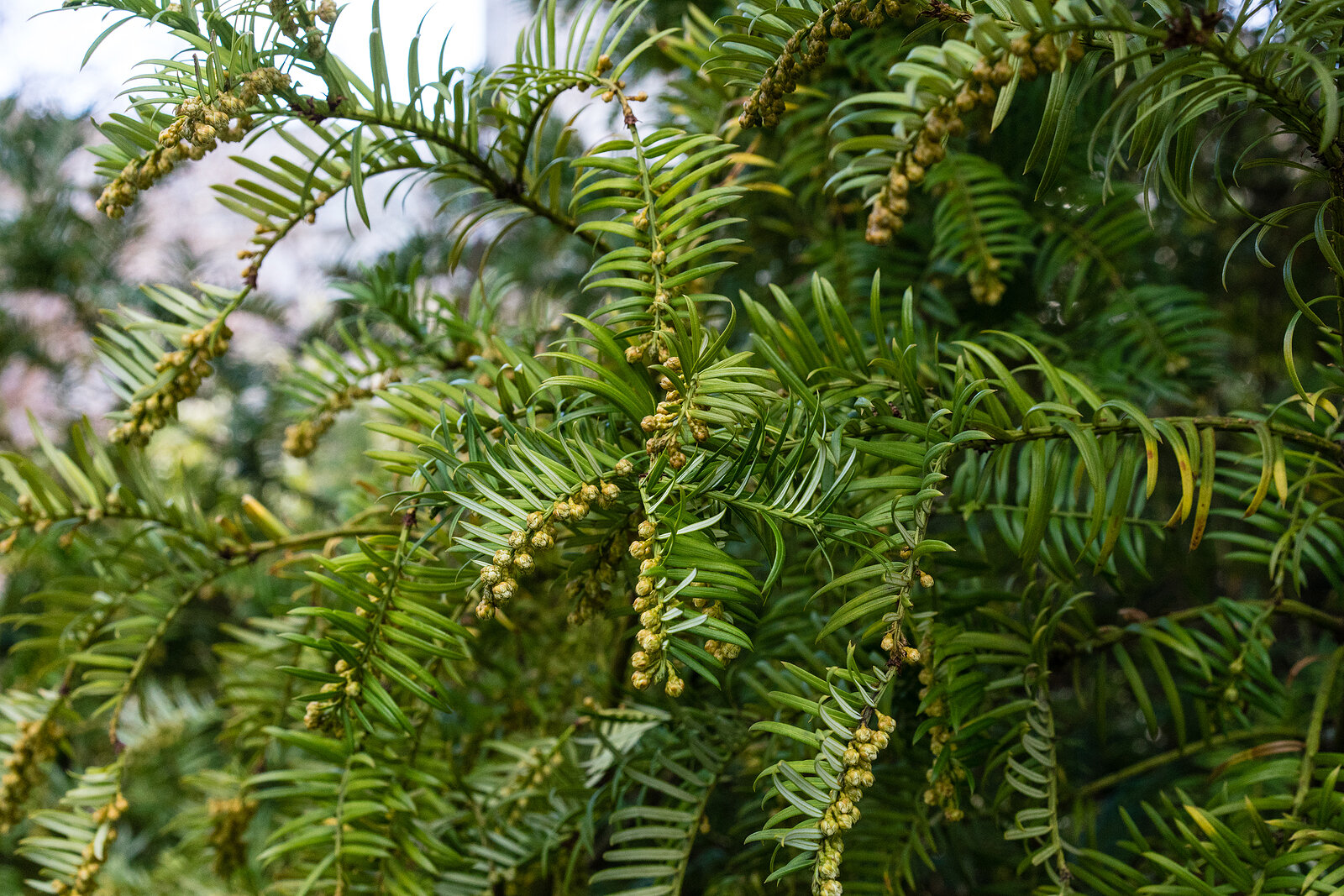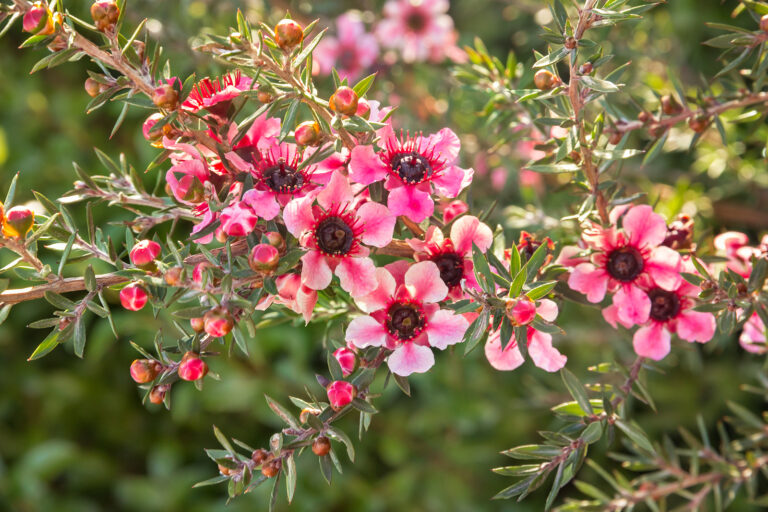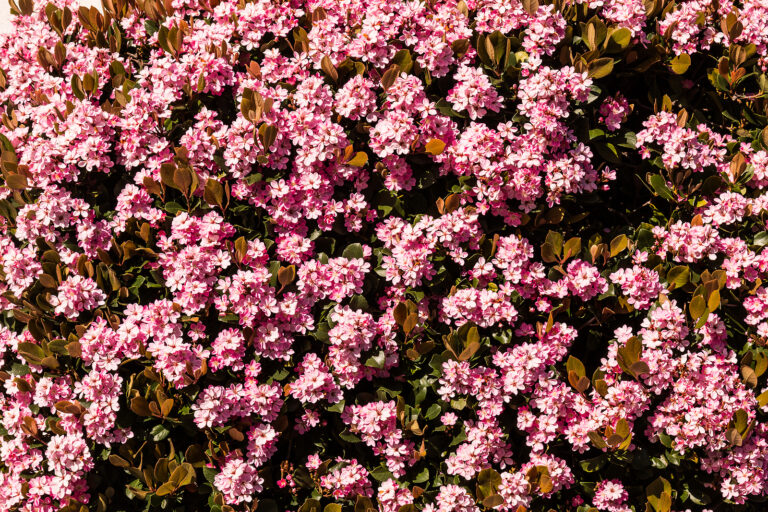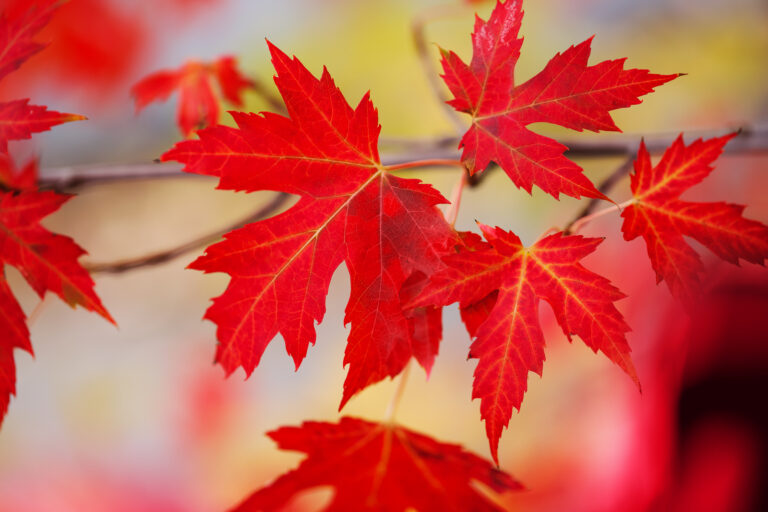How to Grow Cephalotaxus – Plum Yew
Cephalotaxus, commonly known as plum yew, is a slow-growing evergreen shrub or small tree with lush, dark green foliage, making it a fantastic option for shaded areas, woodland gardens, or as an accent in mixed borders. Native to East Asia, this plant is loved for its adaptability to various light conditions, tolerance of dry shade, and deer resistance. The plant’s unique appearance—reminiscent of yew (Taxus) with long, narrow needles—adds texture and color, especially in darker corners of the garden. In this guide, we’ll cover its characteristics, planting tips, growth care, and creative uses in garden design.
Cephalotaxus is part of the Taxaceae family, which includes other yews, though it’s distinguished by its denser foliage and longer needles. This plant typically grows between 3 to 10 feet in height and width, depending on the variety and growing conditions. Its needle-like leaves are arranged in a spiral pattern, and it produces small, plum-like fruits in the female plants, hence the name “plum yew.”
Plum yew is well-suited for USDA hardiness zones 6 through 9, though some varieties can survive zone 5. It thrives in shaded locations, including dry, woodland settings where other plants might struggle. Its adaptability and low-maintenance nature make it a valuable choice for both formal and informal garden landscapes.
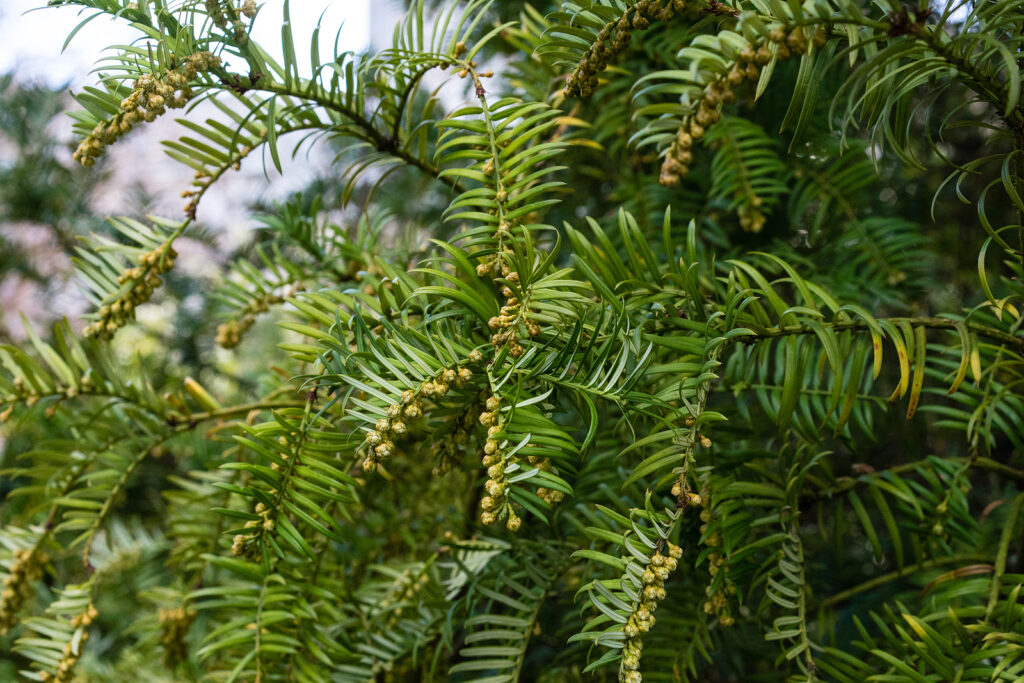
Choosing the Right Cephalotaxus Variety
Several varieties of Cephalotaxus are popular in gardens:
- Cephalotaxus harringtonia ‘Duke Gardens’: A dense, compact variety reaching about 3-4 feet tall and wide, ideal for foundation plantings and low hedges.
- Cephalotaxus harringtonia ‘Fastigiata’: This upright form has a narrow, columnar habit, growing up to 10 feet, making it perfect as a specimen or for screening.
- Cephalotaxus harringtonia ‘Prostrata’: A low-growing, spreading variety that stays close to the ground, great as groundcover or under taller plants.
Where to Plant Cephalotaxus
Cephalotaxus prefers partial to full shade, but it can also tolerate dappled sunlight. It’s an excellent choice for areas with dry shade, such as under large trees or along shaded borders. Here are ideal site conditions:
- Shade: Full to partial shade is best, though it can handle a few hours of morning sun.
- Well-Draining Soil: Plum yew grows best in well-draining, slightly acidic soil but can adapt to a range of soil types, including clay and sandy soils.
How to Plant Cephalotaxus Step-by-Step
- Digging the Hole: Dig a hole twice as wide and just as deep as the root ball. Cephalotaxus has a shallow root system, so avoid planting it too deeply.
- Amending the Soil: If the soil is heavy clay, add some organic matter, such as compost, to improve drainage.
- Planting: Place the plant in the hole at the same depth as it was in the container. Fill in around the root ball, pressing the soil down gently to remove air pockets.
- Watering: Water thoroughly after planting, ensuring the soil around the roots is moist.
Spacing
For hedges or borders, space Cephalotaxus plants 3 to 5 feet apart, depending on the variety. This spacing allows them to grow into a dense, continuous line without overcrowding.
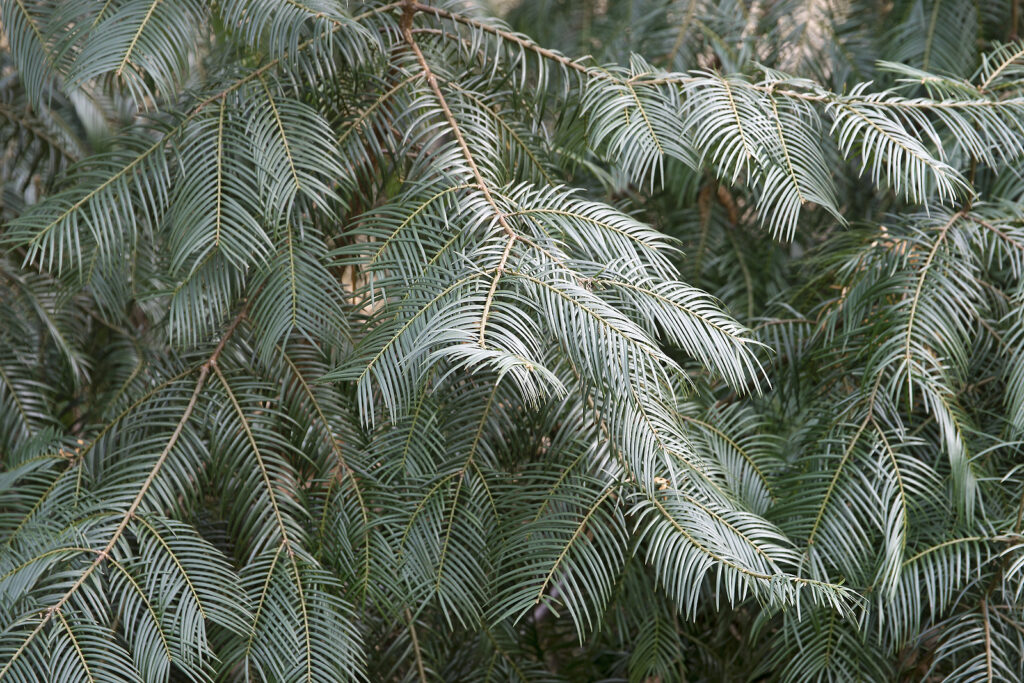
Care and Maintenance of Cephalotaxus
Watering
While established Cephalotaxus plants are drought-tolerant, regular watering is essential during the first growing season. After establishment, water only during prolonged dry spells.
- Young Plants: Water weekly until roots are well-established.
- Established Plants: Cephalotaxus can handle periods of drought but benefits from occasional deep watering, particularly in hot, dry climates.
Fertilizing
Plum yews generally don’t require much fertilizer. However, if the soil is particularly poor, a light application of balanced, slow-release fertilizer in early spring can promote healthy growth. Avoid over-fertilizing, as it can lead to leggy growth and reduce resilience.
Mulching
Apply a 2-3 inch layer of organic mulch around the base of the plant to retain moisture, regulate soil temperature, and prevent weed growth. Keep mulch a few inches away from the plant’s stem to avoid rot.
Pruning
Plum yews have a naturally attractive, rounded shape and require minimal pruning. However, light pruning can enhance their appearance or control size:
- For Shape: Trim as needed in early spring to maintain a neat form.
- For Health: Remove dead, damaged, or crowded branches annually to improve air circulation.
Pest and Disease Management
Cephalotaxus is highly pest-resistant and seldom faces serious disease problems, making it a low-maintenance plant. In shaded, damp conditions, watch for root rot, which can be prevented by ensuring good soil drainage.
Propagation of Cephalotaxus
Cephalotaxus can be propagated by seeds or cuttings, though cuttings are typically preferred for faster, more reliable results.
- From Cuttings: Take 4-6 inch semi-hardwood cuttings in summer, dip in rooting hormone, and plant in moist, well-draining soil. Keep in a shaded area and mist regularly until roots develop.
- From Seeds: Although possible, growing from seeds is slow and requires patience. Collect seeds from mature fruits in autumn, clean, and plant in well-draining soil. Germination may take several months.
Using Cephalotaxus in Garden Design
Plum yews are prized for their versatility and suitability in shaded gardens. Here are some creative ways to incorporate Cephalotaxus into your landscape:
Foundation Planting
Plum yews work well in foundation plantings, where their evergreen foliage softens building lines and provides year-round greenery. Plant them along shaded foundations or as a low-growing, dense hedge.
Shade Garden and Woodland Borders
Cephalotaxus adds structure and texture to woodland or shade gardens. Its evergreen leaves contrast well with flowering shade plants, like hostas, ferns, and astilbes, and add visual interest in winter when many other plants are dormant.
Groundcover and Erosion Control
Low-growing varieties like Cephalotaxus harringtonia ‘Prostrata’ make excellent groundcovers. They spread slowly, creating a thick, green carpet that suppresses weeds and helps prevent soil erosion on shaded slopes or banks.
Privacy Screens and Hedging
The upright, columnar form of Cephalotaxus harringtonia ‘Fastigiata’ is ideal for narrow spaces or as a screen in shaded areas. Its dense foliage provides effective privacy and windbreaks, making it useful for lining paths or driveways in larger gardens.
Container Gardening
Though slower-growing, smaller varieties of Cephalotaxus can be grown in large containers, where they create elegant, low-maintenance accents for shady patios or entryways. Ensure containers have adequate drainage, and use a well-draining potting mix to prevent waterlogging.
Benefits of Using Cephalotaxus in the Garden
- Deer Resistance: Cephalotaxus is highly deer-resistant, a significant advantage in areas where deer are a problem.
- Drought Tolerance: Once established, Cephalotaxus is resilient in dry conditions, making it a good choice for low-water gardens.
- Shade Tolerance: Unlike many evergreens, Cephalotaxus thrives in deep shade, filling garden spaces where other plants may struggle.
- Winter Interest: With dense, dark green foliage, Cephalotaxus adds color and texture to the winter garden, making it a great choice for year-round visual appeal.
- Wildlife Habitat: The dense foliage provides shelter for birds and small animals, especially during colder months.
Potential Challenges with Cephalotaxus
While Cephalotaxus is low-maintenance, there are a few considerations to keep in mind:
- Slow Growth: Plum yews grow slowly, so patience is required. This slow growth, however, is beneficial for low-maintenance gardens.
- Sensitive to Waterlogged Soil: While tolerant of dry conditions, Cephalotaxus dislikes waterlogged or overly moist soil, which can lead to root rot. Ensure adequate drainage, especially in areas with heavy clay soil.
- Size Considerations: Some varieties can grow quite large over time. Be mindful of spacing and choose a variety suited to your garden’s size.
Recommended Cephalotaxus Varieties for Different Garden Settings
- Small Gardens: Cephalotaxus harringtonia ‘Duke Gardens’ is compact and works well in smaller spaces.
- Hedging or Screening: Cephalotaxus harringtonia ‘Fastigiata’ with its upright form is ideal for narrow screens or taller hedges.
- Groundcover: Cephalotaxus harringtonia ‘Prostrata’ is best for groundcover due to its low, spreading habit.
Cephalotaxus Summary
Cephalotaxus is a versatile, low-maintenance evergreen that brings rich green foliage, textural interest, and year-round appeal to shaded gardens. Its tolerance for dry shade, resistance to deer, and adaptability to different soil types make it a valuable choice for both woodland landscapes and formal garden designs. Whether used as a foundation plant, a groundcover, a hedge, or an accent

